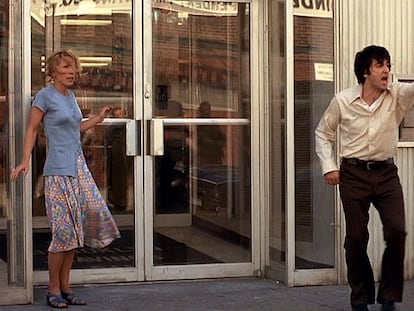Michael Henry Adams, the man who preserves Harlem: Speculators ‘thought that Black people would leave’
Adams is a kind of archaeologist of an endangered architecture; today his home is an unofficial museum of the history of the neighborhood
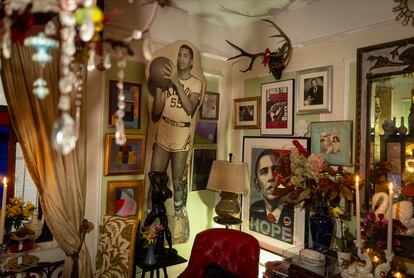
As a child, Michael Henry Adams used to watch films like Gone with the Wind (1939) and Saratoga Trunk (1945) and feel drawn to the sumptuous mansions of the American South. Yet, as an African-American child, he was also aware that his race made it difficult for him to be the owner in that kind of context. He then shifted his focus to the houses built at the end of the 19th century in Newport, Rhode Island, which he also found fantastic. However, he soon learned that the place had been the second most important port of entry for slaves in the United States. Turning his attention towards England, he was fascinated by the houses of the Harewood dynasty — but it turned out that their fortunes came from the plantations in Jamaica. Any way he looked at it, it seemed difficult for him to be a lover of interior design without betraying his own people. His father had already warned him, when he told him that he wanted to be an artist at the age of 14: that was only for white people. His mother, a little more in favor of him pursuing his passions, told him that the people who were into decorating were “a little bit funny.”
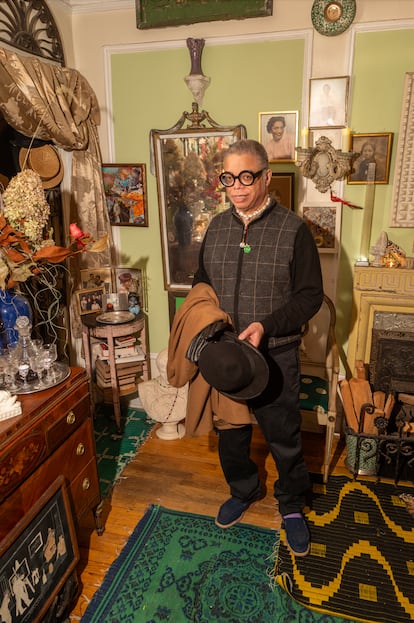
He was born in Akron, Ohio, in 1956, but he left as soon as he was able, headed for the New York of the 1980s. There, in Harlem, he found an aesthetic splendor that did not stain his hands with blood. They were the echoes of the neighborhood’s so-called Renaissance, the golden age of African-American culture that lasted from 1910 to the mid-1930s, the era of the Cotton Club, of the poet Claude McKay, of the intellectual leadership of W.E.B. Du Bois. Luxurious halls, terracotta facades, engraved cornices. A legacy threatened by Reagan’s neoliberalism and the first winds of gentrification. Adams had found his life’s mission: to defend, preserve and write about some of his community’s historic places. To become a sort of archaeologist of an architecture that is too recent, too unknown, and which faced economic and institutional intentions of being buried.
At the time, he notes, hardly any places in Harlem were protected for their historical relevance. Today there are barely 20. The office in charge of appointing them is still focused on buildings for white elites, and they still act as if they were doing Black people a favor every time they add one of theirs to their list of protected buildings, he complains. Adams was arrested twice for protesting against the demolition of the Renaissance Casino (which he could not prevent) and the Audubon Ballroom, where Malcolm X was assassinated. All that was left was the façade and a third of the lobby. “I said it would have been better for them to destroy everything rather than just leaving a few fragments. Would you destroy part of Ford’s Theater where Lincoln was slain?”

Thus, Adams became a beauty activist. He fought in the streets and in municipal offices, but he has also been a contributor to The New York Times and The Guardian, as well as having written books such as Harlem: Lost and Found (2002) and Style and Grace: African Americans at Home (2003). And, faced with the apathy of the authorities, and even his own neighbors, he took pieces of all those buildings to his house, which today is a peculiar, unofficial museum of the history of the neighborhood. He has moldings from the old Lafayette Theater, which used to be located on 135th Street. That is where Duke Ellington debuted, where Orson Welles premiered his Voodoo Macbeth and where Francis Ford Coppola filmed The Cotton Club, in the absence of the original space. It was demolished in 2013. He has a silver garland from the lobby of the Audubon Ballroom. He also preserves fragments of friezes from the lobby of the former Harlem Chamber of Commerce.
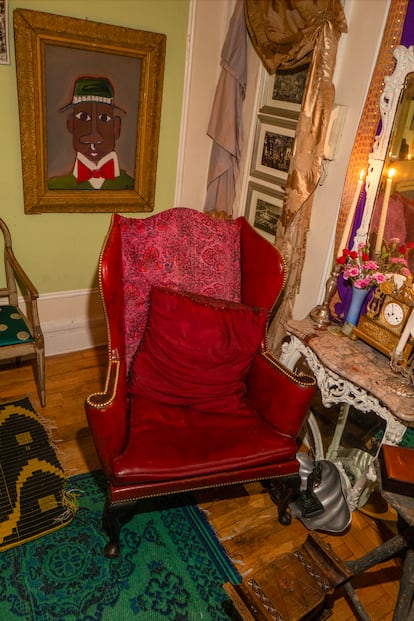
It all sounds quite luxurious and encyclopedic, but in fact Adams lives in a kind of mirage that conceals his scarcity. “I’ve always been broke. Maybe because people hate that you are confrontational and that you challenge them,” he says, still unbribable. His life story includes scenes with Harry Belafonte as well as first-hand anecdotes about Sidney Poitier with mice in the walls and leaks in the ceiling. His good taste, no doubt about it, has helped him march to the beat of his own drum: in a dark living space he uses almost only candle lighting, even in his charming chandelier, as if it were a 19th-century palace. He has a pair of wall candelabra (taken from the rubble of an old synagogue) that use electric candles — but, he notes, they also used these fake candles at Charles and Camilla’s reception in Versailles. It happens to the best of us.
He is also a great host who welcomes us into his home with exquisite breakfast crockery and a three-tier tray with raspberries and pastries. As he pours a cup of coffee from the corner deli into a porcelain pitcher, he confesses that of the hundreds of pieces that clutter his living room, none has cost more than $35; some pieces were even rescued from the trash. Of course, his story is also told on his walls: there is a life-size photograph of his father when he used to play basketball, a photo of Martin Luther King taken by his grandfather and some drawings that he made himself. A home as humble as it is sumptuous that captivates him to the point that his doctor worries because he never goes outside. “He tells me that I have chronic depression, but I don’t think it’s bad that I don’t feel like leaving this place.” He inhabits one of those buildings that he fought unsuccessfully to turn into a protected space, at 41 Convent Street. Its first African-American resident was the actor Fredrick O’Neal, founder of the American Negro Theater in 1940, and its peculiar vaulted lobby connects three triplet buildings built in 1926, almost 100 years ago.
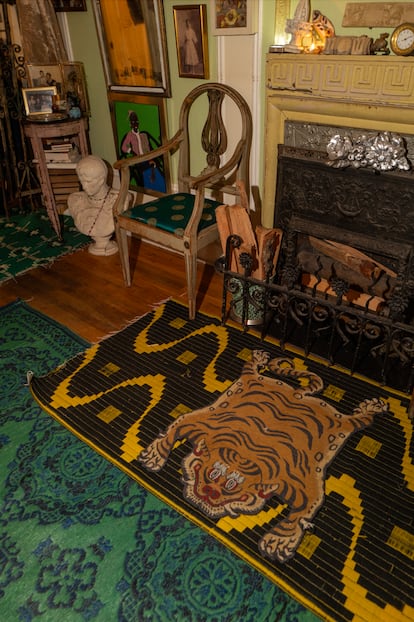
But the fight continues. In the 21st century, his main enemy turned out to be the university to which he once found himself linked: Columbia, which became a kind of real estate steamroller with new glass facilities and impersonal buildings made to house students, causing the rents of lifelong citizens to rise: “It is one of the worst things that have happened to the neighborhood. They talk about having a mission of integration and knowledge, but they keep building buildings that look like factories.” He also had his ups and downs with the late Senator Bill Perkins, an African-American democrat serving the state of New York. Although they were friends, Perkins accused Adams of being bourgeois, “thinking it was more important to turn old buildings into housing blocks with rent-controlled apartments for low-income people,” says Adams. “What is the point of trading this genuine, authentic, distinct place for nothing, for something that could be anywhere?” Sometimes he even defended the white people who “exquisitely” restored some of the houses in the neighborhood, later expressing his surprise when they were sold after a short time. “Apparently the real estate agent told them that the Black people would be gone in a few years, but that didn’t happen.”
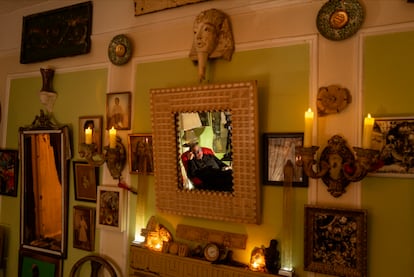
Sign up for our weekly newsletter to get more English-language news coverage from EL PAÍS USA Edition
Tu suscripción se está usando en otro dispositivo
¿Quieres añadir otro usuario a tu suscripción?
Si continúas leyendo en este dispositivo, no se podrá leer en el otro.
FlechaTu suscripción se está usando en otro dispositivo y solo puedes acceder a EL PAÍS desde un dispositivo a la vez.
Si quieres compartir tu cuenta, cambia tu suscripción a la modalidad Premium, así podrás añadir otro usuario. Cada uno accederá con su propia cuenta de email, lo que os permitirá personalizar vuestra experiencia en EL PAÍS.
¿Tienes una suscripción de empresa? Accede aquí para contratar más cuentas.
En el caso de no saber quién está usando tu cuenta, te recomendamos cambiar tu contraseña aquí.
Si decides continuar compartiendo tu cuenta, este mensaje se mostrará en tu dispositivo y en el de la otra persona que está usando tu cuenta de forma indefinida, afectando a tu experiencia de lectura. Puedes consultar aquí los términos y condiciones de la suscripción digital.
More information
Archived In
Últimas noticias
Most viewed
- Reinhard Genzel, Nobel laureate in physics: ‘One-minute videos will never give you the truth’
- Oona Chaplin: ‘I told James Cameron that I was living in a treehouse and starting a permaculture project with a friend’
- Pablo Escobar’s hippos: A serious environmental problem, 40 years on
- Why we lost the habit of sleeping in two segments and how that changed our sense of time
- Chevy Chase, the beloved comedian who was a monster off camera: ‘Not everyone hated him, just the people who’ve worked with him’
